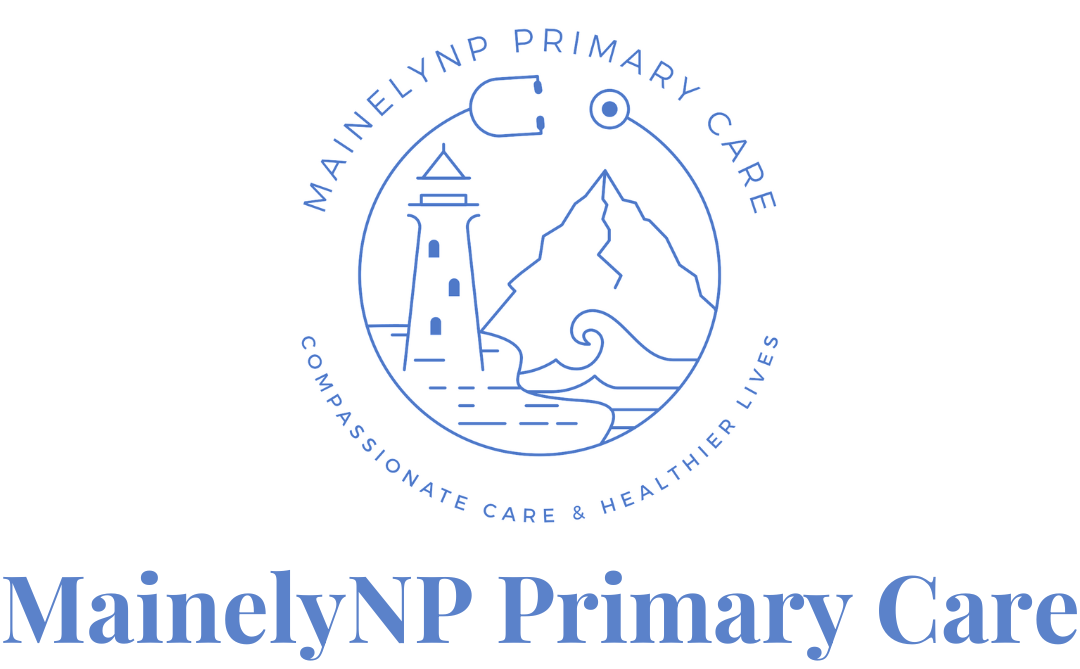Eating for Performance: How to Fuel Your Body for Optimal Results
When it comes to achieving your fitness goals, nutrition plays a crucial role in how well your body performs. Eating for performance isn't just about counting calories or cutting carbs—it's about fueling your body with the right balance of nutrients to enhance energy levels, improve workout results, and support overall health. The food you eat has a direct impact on how your body functions during exercise, how quickly you recover, and how you feel day-to-day. Understanding how to properly fuel your body can make the difference between simply working out and truly maximizing your performance. In this post, we'll explore how you can optimize your nutrition to optimize your workouts, build muscle, recover faster, and feel your best—both in and out of the gym.
Understanding Calories & Macronutrients
To fuel your body for optimal performance, it's essential to understand the role of calories and macronutrients—proteins, carbohydrates, and fats. You need to consume enough calories to support your body and your workouts. The macronutrients are the building blocks of energy and recovery, each playing a unique role in helping you perform at your best.
- Protein is critical for muscle repair and recovery, especially after intense workouts. When you exercise, your muscles undergo tiny tears, and protein helps rebuild those tissues stronger than before. It's important to consume protein regularly to support muscle growth and prevent breakdown.
- Carbohydrates are your body's primary energy source, particularly during exercise. They break down into glucose, which fuels your muscles and brain, giving you the energy to power through workouts. Complex carbs, like whole grains and vegetables, provide sustained energy, while simple carbs, like fruits, offer quick energy boosts.
- Fats are crucial for long-term energy and overall health. Fats help absorb essential vitamins and regulate hormones, while also providing a steady energy source during lower-intensity or endurance activities. Including healthy fats like avocado, nuts, and olive oil in your diet can help maintain performance and support bodily functions.
Finding Your Calories & Macronutrient Needs
Understanding how many calories and macronutrients (proteins, carbohydrates, and fats) you need is key to optimizing your nutrition for performance. This varies depending on your activity level, body composition goals, and the type of training you do.
- Calculating Your Caloric Needs
Your daily calorie needs are determined by a few factors, including your Basal Metabolic Rate (BMR) - the amount of energy your body needs at rest AND your activity level. Once you know these numbers you can calculate your total daily energy expenditure (TDEE) OR calories needed each day.
To calculate your Basal Metabolic Rate (BMR) using the Mifflin-St. Jeor equation, you’ll need to use one of two equations:
Males: 10 × weight (in kilograms) + 6.25 × height (in centimeters) – 5 × age (in years) + 5
Females: 10 × weight (in kilograms) + 6.25 × height (in centimeters) – 5 × age (in years) – 161
For example:
A 35-year-old, 200-pound (90.7-kg), 6-foot (183-cm) male would have a BMR of 1,882. At rest, he’ll burn around 1,882 calories in a day.
A 35-year-old female who weighs 150 pounds (68 kg) and is 5 feet 7 inches (170 cm) tall will burn around 1,409 calories per day at rest.
Next you will find your total daily energy expenditure (TDEE) to give you a general idea of how many calories your body needs per day to maintain your current weight.
To calculate your TDEE, you’ll need to add an activity factor to the equation:
1.2: sedentary (little to no exercise)
1.375: lightly active (light exercise 1 to 3 days per week)
1.55: moderately active (moderate exercise 6 to 7 days per week)
1.725: very active (hard exercise every day, or exercising twice a day)
1.9: extra active (very hard exercise, training, or a physical job)
Then, you can calculate your TDEE using this equation:
BMR x activity factor = TDEE
Using our examples above:
A 35-year-old, 200-pound (90.7-kg), 6-foot (183-cm) male would have a BMR/RMR of 1,882.
At rest, he’ll burn around 1,882 calories in a day.
1,882 x 1.55 = 2,917 calories/day
A 35-year-old female who weighs 150 pounds (68 kg) and is 5 feet 7 inches (170 cm) tall will burn around 1,409 calories per day at rest.
1,409 x 1.55 = 2,184 calories/day
This number will give you a general idea of how many calories your body needs per day to maintain your current weight.
Trouble with the math? Use this online calculator.
Once you know your TDEE, you can adjust your calories based on your goals:
- Maintenance: Eating around your TDEE will maintain your current weight and performance levels.
- Muscle Gain: Increase your caloric intake by 5-10% to support muscle growth and strength.
- Fat Loss: Decrease your calories by 10-20% to shed body fat while maintaining energy for workouts.
Breaking Down Your Macros
Once you've determined your calorie needs, the next step is to break them down into macronutrients. A balanced macro ratio for performance usually looks like this:
- Protein: 0.8-1.2 grams per pound of body weight to support muscle repair and growth.
- Carbohydrates: 40-65% of total calories for energy, especially for high-intensity exercise.
- Fats: 20-35% of total calories to support long-term energy, hormone regulation, and overall health.
Here's an example for a person weighing 150 lbs who wants to maintain weight on a 2,200-calorie diet, with protein set at 1 gram per pound of body weight.
Step 1: Set Protein
Protein is set at 1 gram per pound of body weight, so for a 150 lb female, that would be: 150 grams of protein.
Each gram of protein has 4 calories, so 150 grams of protein = 600 calories from protein.
Step 2: Set Fat
A good range for fat intake is 20-35% of total calories. Let's set fat at 30% of total calories:
30% of 2,200 calories = 660 calories from fat
Each gram of fat has 9 calories, so 660 calories ÷ 9 = 73 grams of fat.
Step 3: Set Carbohydrates
Carbs will make up the remaining calories.
Total calories = 2,200
Calories from protein = 600
Calories from fat = 660
Remaining calories for carbs = 2,200 - (600 + 660) = 940 calories from carbohydrates
Each gram of carbohydrate has 4 calories, so 940 calories ÷ 4 = 235 grams of carbohydrates.
Final Macronutrient Breakdown:
150 grams of protein (600 calories)
73 grams of fat (660 calories)
235 grams of carbohydrates (940 calories)
This macronutrient breakdown supports a balanced diet to maintain weight, with sufficient protein for muscle maintenance, fats for long-term energy and essential bodily functions, and carbohydrates to fuel workouts and daily activities. You can often see improvements in body composition (fat loss and muscle gain) at maintenance when you are a beginner. If you are looking for fat loss, you could decrease daily calories by 10-20% and recalculate the above numbers, keeping protein the same.
Customizing Your Macros
Everyone's body responds differently to nutrition, so it’s important to experiment and adjust based on how you feel, perform, and recover. If you’re feeling fatigued during workouts, you might need to increase your carbohydrate intake. If muscle recovery is slow, you might need to bump up your protein. By fine-tuning your calories and macros to match your training and goals, you can fuel your body for better performance, muscle gain, or fat loss, ensuring you stay on track to achieve your best results. Keep in mind there are different ways to monitor food intake - you can weigh/measure and track OR estimate using the hand portion tool or measuring cups.
Timing Your Nutrition for Optimal Performance
What you eat is important and if you are hitting your calorie and macro targets throughout the day you should see great results in your performance goals. When you eat can help you maximize your performance and reach your goals faster. By timing your nutrition strategically, you can fuel your workouts, sustain energy throughout the day, and recover more efficiently.
- Pre-Workout Nutrition: Eating the right foods before a workout can significantly improve your energy and stamina. Ideally, a pre-workout meal or snack should include a balance of carbohydrates and protein. Carbs provide the quick energy your muscles need during exercise, while protein supports muscle strength and prevents excessive breakdown. A small snack like a banana with peanut butter or a smoothie with protein powder and oats can help you power through your workout without feeling sluggish or overly full. If you are fueling less than 1 hour before your workout, limit fat and fiber to limit digestive upset. If your workout is more than 2 hours away you can have a balanced meal with fat and fiber.
- Post-Workout Recovery: After exercise, your body is in recovery mode, needing to replenish lost energy and repair muscle tissue. A combination of protein and carbohydrates within 1-2 hours post-workout is ideal for refueling. Carbs help replenish glycogen stores (the energy your muscles use), while protein aids in muscle repair and growth. Examples of good post-workout meals include a chicken and rice bowl with veggies, or a protein shake with a side of fruit.
- Meal and Snack Timing: To maintain energy levels throughout the day, it’s important to eat balanced meals and snacks at regular intervals. Eating every 4 hours can help keep your blood sugar stable, prevent energy crashes, and support consistent performance. Prioritize whole, nutrient-dense foods like lean proteins, whole grains, healthy fats, and fruits or veggies to keep your body fueled and ready for action.
By paying attention to what and when you eat, you can boost your energy levels, enhance workout performance, and ensure your body recovers efficiently after exercise. I know calculating calories, macros, and making lasting habit changes can feel overwhelming, especially when balancing it with your fitness goals. If you need more guidance, consider attending the nutrition workshop at SnapFitness in South Portland, ME 10/29/24 at 530pm OR schedule a personalized consultation with NP Amy at MainelyNP Primary Care. I want to help you navigate your journey to better health and peak performance!
A note on sex and gender: You’ll notice that the language used in the equations is pretty binary: “male” and “female.” We recognize that these terms don’t encompass all identities and experiences. We can make personalized adjustments together.











